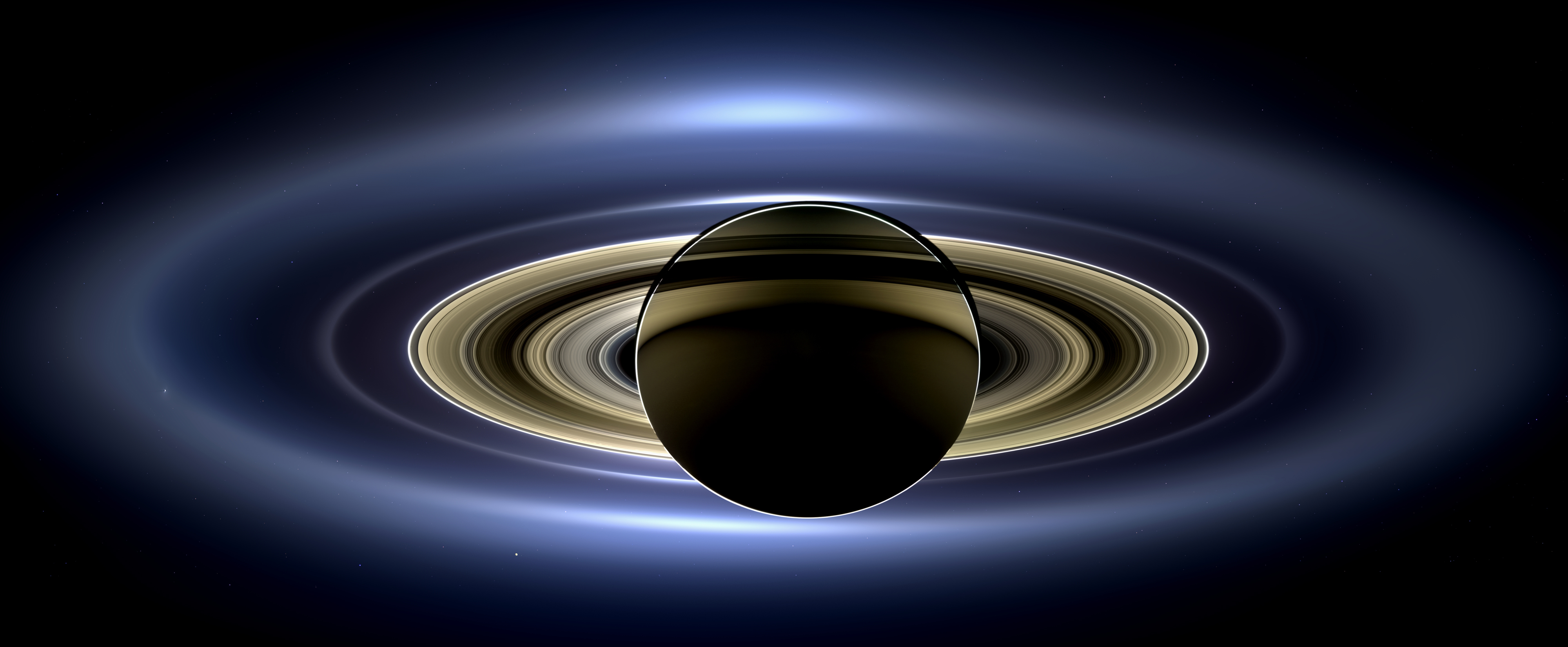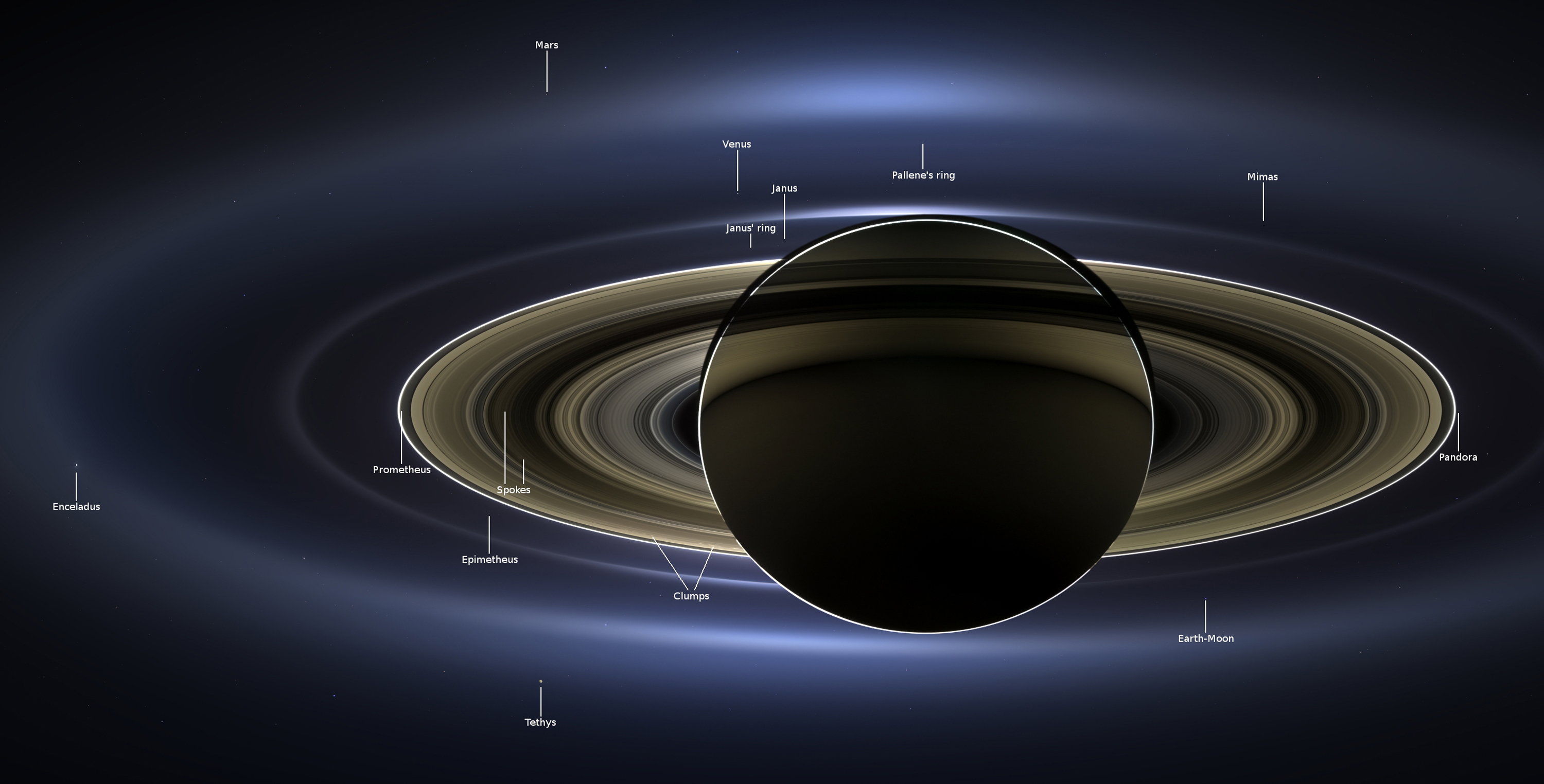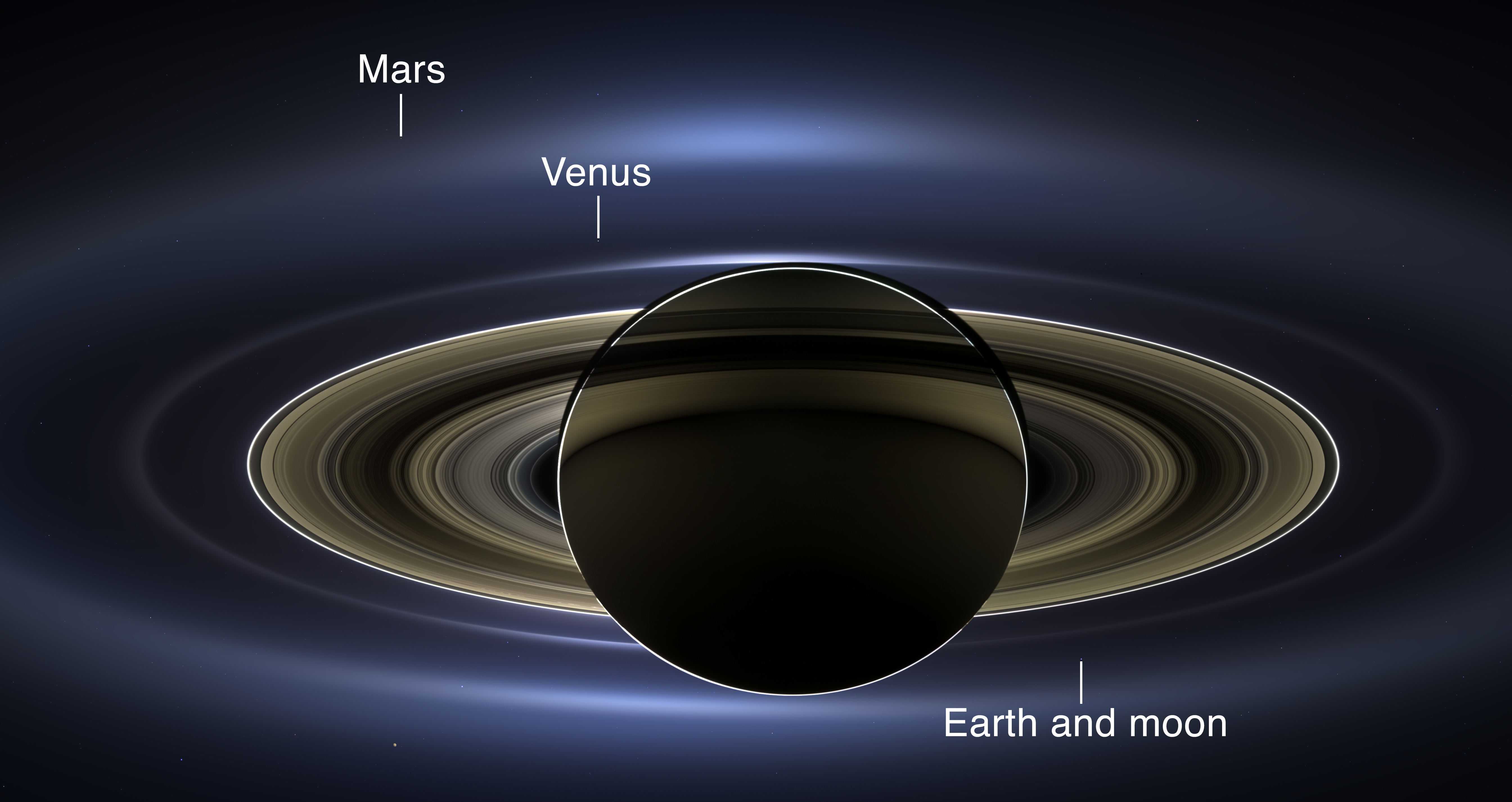
For nearly 10 years NASA’s Cassini spacecraft has been delivering a wealth of valuable science about Saturn, exploring the gas giant, its moons, and ring system in unprecedented detail. The 22-foot-tall plutonium-powered spacecraft—the largest and most complex unmanned interplanetary spacecraft ever made—has also delivered some incredible images to its creators back on Earth, and the most recent images from Cassini are no exception.
On July 19, 2013, Cassini slipped into Saturn’s shadow to capture some never-before-seen views of the planet eclipsing the Sun, which allowed for a unique opportunity to also capture images of the Earth, our Moon, Venus, Mars, and several of Saturn’s moons all at once. The occasion also defined the first time that people had advance notice that they would be photographed from another world, and people around the world turned skyward to wave as their image was taken from over one billion miles away.
This most recent image is a natural color view, just as the human eye would see it if you were there with Cassini. Using both its wide-angle and narrow-angle cameras, the spacecraft captured a total of 323 photographs over a four-hour period of time, but only 141 images were used to create this new panoramic mosaic. This incredible image, released by NASA on Nov. 12, 2013, spans a distance of 404,880 miles—roughly twice the distance from the Earth to the Moon.

“In this one magnificent view, Cassini has delivered to us a universe of marvels,” said Carolyn Porco, Cassini’s imaging team lead at the Space Science Institute in Boulder, Colo. “And it did so on a day people all over the world, in unison, smiled in celebration at the sheer joy of being alive on a pale blue dot.”
Cassini captured these images at a distance of 746,000 miles from Saturn—each pixel spans 45 miles. Seven of Saturn’s moons—Prometheus, Pandora, Janus, Epimetheus, Enceladus, Mimas, and Tethys—were captured by Cassini’s cameras. The planet Venus is visible just above and to the left of Saturn in the image mosaic, and Mars is visible to the upper-left of Venus. Earth, the pale blue dot we call home, is visible to the bottom-right of Saturn, and our Moon is barely visible, protruding from Earth’s bottom-right.
The images can be viewed and downloaded in high-resolution HERE.
“This mosaic provides a remarkable amount of high-quality data on Saturn’s diffuse rings, revealing all sorts of intriguing structures we are currently trying to understand,” said Matt Hedman, a Cassini participating scientist at the University of Idaho in Moscow. “The E ring in particular shows patterns that likely reflect disturbances from such diverse sources as sunlight and Enceladus’ gravity.”

The shining halo surrounding Saturn and its inner rings is actually the E ring, which lies 149,000 miles above Saturn. The moon Enceladus is visible to the far left of Saturn within the E ring, and if you look closely (zoom in with the hi-res version) you can see a plume from geysers erupting at the moon’s south pole. This process of Enceladus spitting icy plumes into the vacuum of space around Saturn is actually how the E ring is formed.
“With a long, intricate dance around the Saturn system, Cassini aims to study the Saturn system from as many angles as possible,” said Linda Spilker, Cassini project scientist based at NASA’s Jet Propulsion Laboratory (JPL) in Pasadena, California. “Beyond showing us the beauty of the Ringed Planet, data like these also improve our understanding of the history of the faint rings around Saturn and the way disks around planets form — clues to how our own solar system formed around the sun.”
The mission, which launched in 1997 and arrived at Saturn in 2004, continues to go strong. The spacecraft is reportedly in excellent health, and the mission is expected to continue until at least 2017.
Want to keep up-to-date with all things space? Be sure to “Like” AmericaSpace on Facebook and follow us on Twitter: @AmericaSpace




Absolutely stunning photos, especially with the “look back” at Earth and the other planets. To think that intelligent creatures on our “pale blue dot” are capable of such accomplishments underscores the need to continue deep space exploration. What wonders await us? Exciting, interesting times indeed!